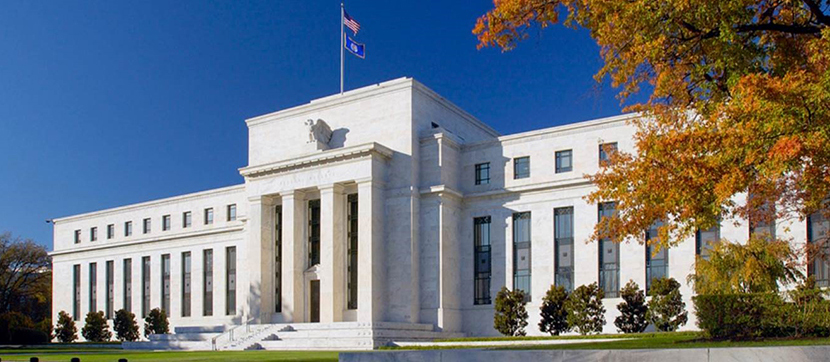
Fed Stays the Course: Monetary Policy ‘Quite Supportive for Housing, Mortgage Markets’

With the economy still suffering and a sharp uptick in coronavirus cases nationwide, the Federal Open Market Committee was widely expected to hold the line during its two-day policy meeting that ended yesterday. And it did.
The FOMC, as expected, made no changes to the federal funds rate, which has held at between zero and 0.25 percent since March. And it reiterated its support of measures to bolster the U.S. economy in the wake of continued turmoil stemming from the coronavirus pandemic.
“The path of the economy will depend significantly on the course of the virus,” the FOMC said in its policy statement (https://www.federalreserve.gov/newsevents/pressreleases/monetary20201216a.htm). “The ongoing public health crisis will continue to weigh on economic activity, employment, and inflation in the near term, and poses considerable risks to the economic outlook over the medium term.”

Mike Fratantoni, Chief Economist with the Mortgage Bankers Association, said the Fed’s cautious approach bodes well for an economic recovery—and for the housing and mortgage markets.
“The Federal Reserve reaffirmed their commitment to keep short-term rates at zero for the foreseeable future, noting the slowing pace of economic growth due to the intensification of the pandemic,” Fratantoni said. “We fully expect that they will maintain rates at the zero lower bound for years.”
Monetary policy has been “quite supportive” for housing and mortgage markets,” Fratantoni said. “Low rates have stimulated an epic refinance wave, and have also increased affordability for many potential homebuyers. The Fed today has provided additional assurance that supportive policies will remain in place, and there is hope that an additional fiscal stimulus package will soon be passed to support households and businesses currently in distress.”
Fratantoni noted while the Fed has been clear regarding its plans for the federal funds target, they had been less so with respect to asset purchases. “Today’s announcement provided a further commitment that they would continue to purchase Treasuries and MBS at the current pace until there’s ‘substantial progress’ towards a stronger economy,” he said. “With the vaccine distribution commencing, we are hopeful to see such progress over the course of 2021.”
Jay Bryson, Chief Economist with Wells Fargo Securities, Charlotte, N.C., said the FOMC was vague about asset purchases, but expressed confidence the Fed will continue to buy Treasury securities and mortgage-backed securities well into next year.
“Previously, the Committee said that it would continue its asset purchases ‘over coming months,’” Bryson noted. “In the statement that was released today, the Committee said that asset purchases would continue ‘until substantial further progress has been made toward the Committee’s maximum employment and price stability goals.’ The meaning of ‘substantial’ is vague and likely did not provide the clarity that some market participants had hoped. But in our view, the Fed will presumably continue to purchase assets for more than just the ‘coming months.’ In short, long-term interest rates likely will remain at extraordinarily low levels for the foreseeable future.”
The full FOMC statement appears below:
“The Federal Reserve is committed to using its full range of tools to support the U.S. economy in this challenging time, thereby promoting its maximum employment and price stability goals.
“The COVID-19 pandemic is causing tremendous human and economic hardship across the United States and around the world. Economic activity and employment have continued to recover but remain well below their levels at the beginning of the year. Weaker demand and earlier declines in oil prices have been holding down consumer price inflation. Overall financial conditions remain accommodative, in part reflecting policy measures to support the economy and the flow of credit to U.S. households and businesses.
“The path of the economy will depend significantly on the course of the virus. The ongoing public health crisis will continue to weigh on economic activity, employment, and inflation in the near term, and poses considerable risks to the economic outlook over the medium term.
“The Committee seeks to achieve maximum employment and inflation at the rate of 2 percent over the longer run. With inflation running persistently below this longer-run goal, the Committee will aim to achieve inflation moderately above 2 percent for some time so that inflation averages 2 percent over time and longer-term inflation expectations remain well anchored at 2 percent. The Committee expects to maintain an accommodative stance of monetary policy until these outcomes are achieved. The Committee decided to keep the target range for the federal funds rate at 0 to 1/4 percent and expects it will be appropriate to maintain this target range until labor market conditions have reached levels consistent with the Committee’s assessments of maximum employment and inflation has risen to 2 percent and is on track to moderately exceed 2 percent for some time. In addition, the Federal Reserve will continue to increase its holdings of Treasury securities by at least $80 billion per month and of agency mortgage-backed securities by at least $40 billion per month until substantial further progress has been made toward the Committee’s maximum employment and price stability goals. These asset purchases help foster smooth market functioning and accommodative financial conditions, thereby supporting the flow of credit to households and businesses.
“In assessing the appropriate stance of monetary policy, the Committee will continue to monitor the implications of incoming information for the economic outlook. The Committee would be prepared to adjust the stance of monetary policy as appropriate if risks emerge that could impede the attainment of the Committee’s goals. The Committee’s assessments will take into account a wide range of information, including readings on public health, labor market conditions, inflation pressures and inflation expectations, and financial and international developments.
“Voting for the monetary policy action were Jerome H. Powell, Chair; John C. Williams, Vice Chair; Michelle W. Bowman; Lael Brainard; Richard H. Clarida; Patrick Harker; Robert S. Kaplan; Neel Kashkari; Loretta J. Mester; and Randal K. Quarles.”
